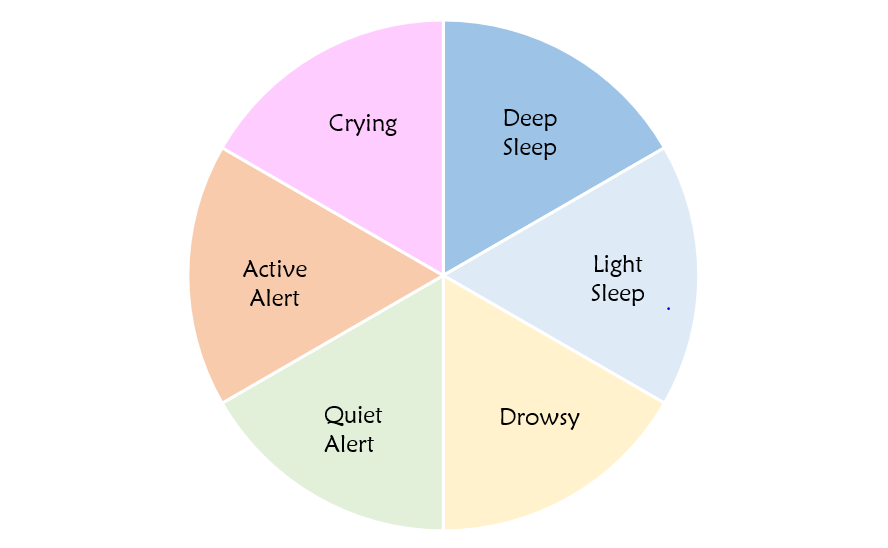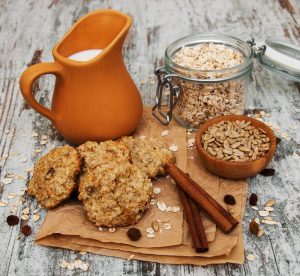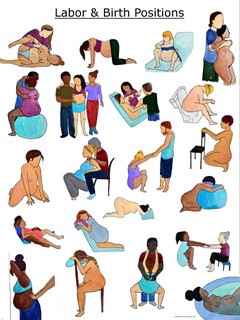Category: Self Care
Boobie Bickies
These biscuits are great for increasing your milk supply. The secret ingredient is brewers yeast. Don’t be tempted to replace it with bakers yeast – or any other sort of yeast – as they won’t work as well.
You will need:
1 Cup self raising wholemeal flour (if you have plain flour or coconut flour add half a teaspoon of baking powder)
.5 cup low fat butter (for a healthier option, use organic virgin coconut oil instead (which is super good for you)
.75 cup of brown sugar or coconut sugar (if wanting to reduce sugar, you could try just half a cup)
2 tablespoons flaxseed meal (can be found at any local health food store)
1 egg
2-3 tablespoons of water (depends on if you prefer moister bickies)
1 tablespoon vanilla (optional, for flavour)
1 teaspoon cinnamon (optional, for flavour)
1-2 tablespoons brewers yeast
.5 teaspoon salt (use Himalayan salt if possible)
1.5 cups oats (get the thicker cut oats if you can)
OPTIONAL – half a cup of your favourite biscuit ingredients – sultanas, currants, pepitas, chopped dates etc.
Instructions:
- In a large mixing bowl, cream the butter or coconut oil and sugar then add the egg and vanilla. Mix well.
- In a separate bowl, combine the flaxseed and water, let sit for a few minutes before adding to mix.
- Add the dry ingredients (apart from the oats and your optional ingredients) and mix well again.
- Finally, stir in the oats and your optional ingredients.
- Make the biscuits (I use a dessert spoon as a rough guide) and place them onto a lightly greased or lined baking tray. Flatten them a little with your fingers or a spatula. If you like a soft centre, don’t squash too much. If you like you can just make them into balls – I do this and love the soft centre!
- Bake for around 10-12 minutes depending on how well cooked/crunchy you like your biscuits – I prefer them a little soft and lightly cooked.
Postpartum Doula
Help in that all important “Fourth Trimester”
Your baby is here! Those 40-odd weeks of dreaming and planning have finally come to fruition and in your arms is a beautiful baby. Now what? Sometimes, coming home and settling into a routine can be a challenge. Amongst the joy, you are struggling with hormones, sleeplessness and anxiety. Managing a new baby is like nothing you have ever done before, and all the reading in the world can’t properly prepare you for the reality.
What is the Fourth Trimester?
The postpartum period is often referred to as the Fourth Trimester, and generally covers the first 12 weeks of your baby’s life. You have a new baby, your body is recovering from pregnancy and birth, and your hormones are on a roller coaster. It is a time of huge emotional and physical change.
In the past, mums, aunties and sisters have been around to help new mums. But these days we often live far away from our family, or they are busy working and can’t always take the time to help. When it is available, family ‘help’ often comes with its own brand of stress and anxiety. Often our partner takes time off, but that is not always possible, and if they work long hours this can mean you are home alone for long periods when your partner returns to work. This is where a Postpartum Doula can help.
What Does a Postpartum Doula Do?
A Postpartum Doula can help you with all the physical, emotional and practical aspects of becoming an awesome new mum, helping you get organised and feel confident in your new role. A doula will help with:
Nutrition – the last thing you feel like doing is cooking! But good nutrition is important for your own health, and milk production. A doula will ensure you have nutritious home cooked meals to help you get through the days and weeks ahead.
Rest – someone to look out for your baby, and maybe get a few light chores done around the house, while you are sleeping is invaluable.
Partner – sometimes our partner struggles in the fourth trimester. They want to help, but often aren’t sure how, and they will be feeling the same anxiety as mum. The reassurance of a calm, knowledgeable professional can set some of those anxieties to rest.
Siblings – if this is not your first baby, your older children will have a lot of adjusting to do. You need to spend time with your baby, but you need to spend time with your other children too. A doula can help managing those competing demands by taking care of your baby for a while so you have uninterrupted time with your older children, or entertain your older children while you feed and settle baby.
Family and friends – some mums find one of the must frustrating things to manage in the fourth trimester is the well-meaning family and friends who ‘drop in’ to see the baby or ‘give you a hand’. A doula can help you manage these drop-ins and ensure you get the rest – and the help – you need.
Advice – sometimes it is hard for new parents to recognise the difference between what may be normal feelings and behaviour, and what might be a little more serious. A doula can help parents find expert help, whether it be with breastfeeding, anxiety or any other aspect of parenting a newborn.
And sometimes, all you need is a sympathetic ear and an extra pair of hands. A doula can do that too!
When Should I Find a Postpartum Doula?
The best time to look for a Postpartum Doula is while you are pregnant. Many Birth Doulas also provide Postpartum services, so if you are thinking of having a doula at your birth you might like to think about finding one that offers postpartum services as well.
Making a postpartum plan while you are still pregnant is so much easier than waiting until the baby is born and you are tired and hormonal. It will help make sure you are thinking clearly about what you want, and it will allow you to talk to your family and friends so that they are aware of how you want to manage the postpartum period. That said, it is never too late to call on a doula for help.
Making a plan with a doula will also give you the confidence that you really are prepared for what is to come. Things like meal planning, allocating chores, managing family members as well as providing informed, evidence-based advice on things like breast feeding, settling and routines are what a doula is trained to do.
Of course, the best laid plans sometimes go awry, so you need to remain flexible if need be, and a doula can help you revise your plans to make them work for you in your new normal.
Grieving and Postpartum Doulas
Sometimes the unthinkable happens and a healthy happy baby is not the outcome. Whether it be miscarriage, stillbirth or neonatal death, a doula can help you in this most heartbreaking of times. An understanding ear, a hot meal, or a simply someone to hold you up when you need it are all part of a doula’s service.
If you think including a Postpartum Doula in your parenting team might be something you are interested in, please get in touch. I would love to chat:
Positions in Labour
When the big day is nearing your mind begins to turn to how are things going to go in labour. In a previous blog we talked about pain relief in labour. One of the things we mentioned was that different positions can provide relief from certain types of labour pain. So now we are going to look at what those positions might be, when they are most effective, and how they affect the positive progress of your labour.
Fast and Furious
We might think we want to get labour over and done with quickly because we know that it will hurt. But in reality, labour will take as long as it takes, and there are some risks to a very quick labour, not least of which is serious tearing. So what we should be aiming for is strong, steady progress – not a fast and furious race to the finish line.
Early Labour
Generally, you are considered to be in early labour until you are around 3cm dilated, and the mantra here is really, rest, eat, sleep, repeat.
Rest – getting some rest to ensure you have the energy to get through the next phases of labour can be a good idea. The best position here is to lie on your side with your top leg bent and a pillow between your knees. If the contractions aren’t too strong, try and get a little sleep, or meditate.
Eat – aim for something light and nutritious. Try and avoid heavy meals, it’s best to snack. And remember to stay hydrated.
Move – gravity is your best friend in labour, so try to keep moving, Walking – even dancing – will help move put pressure on your cervix, speeding up your dilation and helping the baby get into the right position.
Generally, unless you have a very quick labour, you will have plenty of time for a bit of all three, which is the ideal.
Active Labour
From about 3 to 10cm is known as Active Labour. This is where things really start to ramp up. The aim here is to get the baby into the right position, make sure your contractions are nice and strong, and open your pelvis so the baby doesn’t have too tough a time moving through the birth canal.
There are lots of positions here that will help with all three goals:
- Upright – as in Early Labour, the weight of the baby will help efface the cervix. If the contractions are strong, lean up against your partner, a wall or a piece of furniture. But try to stay as upright as possible, especially in between contractions.
- Hands and Knees – this position helps move the baby to the anterior position if it is in the posterior position, and can provide some relief from lower back pain, It also means you are in a good position for back massage, hot and cold packs. And it allows you to move – swaying to music can be good – all of which help labour progress at a steady pace.
- Kneel or Squat – this allows you to drop the weight of your belly on your legs, but remain upright – there’s that gravity again!
- Sitting – on a bed or a ball. Sitting cross legged on a bed allows you to rest your belly. Rocking on a ball is good. If you are on a ball, make sure you have someone to support your stability during contractions.
- Moving – particularly between contractions, if you can pace, rock or slow dance supported by your birth partner, it will help open your pelvis and allow the baby to move down.
Second Stage – Pushing and Birthing
You will most likely be tired, but if you can get on all fours and keep that pelvis open things will move more quickly. If you don’t think you can manage that, at least try to sit upright, kneel or squat. I can’t stress enough how much gravity will help from beginning to birth!
Sometimes, particularly in hospital births, you will be encouraged to move to what is called a supine position for birth. This means lying down on your back. Whilst this is in some ways the most convenient position for the midwives and doctor, it is not the most efficient position for mum and baby. In fact, in this position, the birth canal curves upwards, so you are fighting against that gravity we have talked about, To see how the baby moves through the pelvis, watch this video: https://www.facebook.com/colchesterbirth/videos/1773156409409529/
Don’t be afraid to speak up and tell your attendants what you would prefer. They will always let you know if there is a medical reason why it’s not a good idea.
What to Try and Avoid
Birth is a very personal experience, and ideally a labouring mum should be able to choose how she approaches it, providing there are no dangers to mum or baby.
However, there is one position, often preferred in hospitals, that should be avoided if possible. The World Health Organisation, in the publication ‘Care in Normal Birth’ says that “women in labour should be allowed to adopt any position they like, while preferably avoiding long periods of lying supine”.
When you lie on your back the weight of the baby can restrict mum’s blood flow, potentially reducing your oxygen, and as mentioned earlier, the upright tilt of the birth canal in this position will show things down. Gravity really is the single most effective tool you can use during your labour.
Always remember…
This is your birth, your body and your baby. Don’t be afraid to tell people what you want and need.
If you would like to talk about the sort of birth you would like, or what benefits a doula can bring to your birthing plan, please get in touch and we can have a chat about your birthing dreams:
Pregnancy Nutrition
Here is our second in the Nutrition Series by Stacy Heckenberg BHSc Nut. Med. This one focuses on what to eat when you are expecting.
Exercise and Cravings
So, you’re pregnant! Congratulations! Welcome to 40 weeks of having your body pushed to its limits. You will change weight and shape constantly during this time, but during pregnancy it is important to maintain a healthy weight to reduce the risk of gestational diabetes and birth complications. Gentle exercise is still ok for most women – think walking, swimming and yoga – but always check with your doctor first. And remember those pelvic floor exercises. You will appreciate that you did them – Hello during birth, and afterwards.
During your pregnancy you may experience food cravings, or aversions. Sometimes things you would normally love suddenly turn your stomach – even just the smell of them. Don’t worry – once baby is with you these aversions will disappear and you can go back to the things you love. Craving things like pickles on ice-cream is not uncommon, but if you are craving things like chalk or dirt it may be an indication of an iron deficiency. As with exercise, talk to your doctor.
Morning Sickness
If you’re like me, you may experience the dreaded morning sickness – or as I like to call it ALL DAY sickness. Morning sickness affects about 80% of women, and usually only lasts through the first trimester, although for some women it lasts until baby arrives.
This can sometimes make you feel like you are not getting the nutrition you need for your growing baby. Don’t worry, it may not feel like it but your body knows what it is doing.
To combat those queasy moments here are some tips:
- Eat small, frequent meals. You will feel better if your tummy doesn’t get too empty
- Always have dry food like crackers, toast, rice cakes and breadsticks on hand to nibble on when you feel unwell
- Reduce your intake of fatty and spicy foods
- Sip on ginger tea
What to Eat – and what Not to Eat
It is important to choose healthy, nutrient dense foods while you are ‘eating for two’.
Avoid fatty and sugary foods. This will give you the optimal nutrient intake, while avoiding excess weight gain during pregnancy.
Things to eat include:
- Fresh fruit and vegetables
- Protein – lean meat, poultry, fish, eggs or tofu
- Good fats – avocado, nuts, seeds and olives
- Folate rich foods like broccoli, cabbage, cauliflower, spinach, zucchini and beans
There are also some foods you should avoid because of the risk of a bacteria called listeria, which is linked to a range of problems in pregnancy including miscarriage and preterm birth. Foods you should avoid during pregnancy are:
- Deli meats
- Raw eggs and meats
- Soft cheeses
- High mercury fish like ahi tuna and swordfish
- Unwashed fruit and vegetables
If you have eaten something that you feel may have been risky, talk to your doctor straight away.
The Role of Nutrients
If you read our blog on Conception nutrition, you will already know this, but there are a few nutrients that are particularly important to your baby during pregnancy:
Zinc – this helps with the construction of healthy cells, strengthens immunity and helps process other nutrients. Foods rich in zine include meat, legumes, nuts, dairy, eggs, wholegrains and seeds.
Folate – helps prevent neural tube defects like spina bifida. Foods to include in your diet are leafy greens, asparagus, citrus and eggs, as well as a supplement.
Vitamin D – aids in the development of baby’s nervous system and skeleton. Get plenty of fatty fish, like herring and salmon, cheese and eggs.
Iodine – ensures a healthy thyroid gland, which manages most of our bodily functions. Foods to include are milk, yoghurt, cheese, tinned tuna and seaweed.
I hope these suggestions help keep you fit and healthy during the incredible time that is pregnancy.
Yours in health
Stacy
www.hillsdistrictnutritionist.com
If you would like more information on any aspect of conception, pregnancy, birth and postpartum, I would love to have chat with you:
7 Great Reasons to Massage Your Baby
If you’ve ever had a massage, you will know how good you feel afterward. That is because massage has been shown to release a whole host of feel good hormones, and reduce the feel bad hormones in your body. Well, the same goes for your baby! Baby massage can help with a wide range of common concerns amongst parents, and lead not only to a happier healthier baby, but more relaxed parents as well. So, what are some of the benefits? And how do you go about massaging your baby effectively?
Benefits to Baby
Babies benefit enormously from massage – and by extension their parents do too!
- Sleep – not only will massage help settle your baby, but it will improve their quality – and quantity – of sleep, leading to a more rested baby and more rested parents!
- Relaxation – massage decreases cortisol (the stress hormone) and increases hormones like serotonin and oxytocin, which improve mood and create calm. And doesn’t everyone want a calm and relaxed baby?
- Digestion – many babies suffer from colic, wind, reflux or constipation. This is not only painful for them, but makes them unhappy. Massage assists with the normal functioning of the digestive system and reduces the effects of all these problems.
- Immunity – research shows that immunity and overall physical wellbeing is improved with massage.
- Growth and Development – massage stimulates the communication between the right and left sides of the brain, which improves the co-ordination which is so important in learning to grasp, crawl and walk. It has also been shown to improve cognitive development.
- Congestion – specific massage techniques have been shown to reduce congestion in the sinus and lungs when baby has a cold, which of course helps them breathe more easily.
- Pain Relief – massage increases the production of endorphins, which have been shown to reduce the perception of pain, so when baby is teething, or in pain for any reason, massage can help give them some natural relief.
A word about Premmies
Premature babies often spend a lot of time in incubators. Sadly, they often also have to undergo many tests and procedures that full-term babies don’t. These tests can be uncomfortable and stressful for both baby and parents.
Along with Kangaroo Care – which we will go into in more detail in an upcoming blog on Skin to Skin – massage can have an enormously positive effect on premmie babies. Not only can it help their little lungs and tummies function better, but research has shown it can help them increase in weight faster, leading to shorter hospital stays.
Benefits to Parents
If the benefit of a calm, relaxed baby who eats and sleeps well isn’t enough, there are also benefits to parents in baby massage.
Whether it is mum or dad doing the massage, both bonding and confidence are increased when they massage baby. For mums, massage has been shown to reduce the likelihood of postnatal depression. It seems that not only does receiving a massage increase feel good hormones, but giving one does too!
How do I Massage my baby?
Massage doesn’t just mean stroking or rubbing your baby’s arms and legs. There are different techniques that can be used for different results. So it is best to get proper training from a qualified Baby Massage practitioner.
What is the best time to massage my baby?
Once you have learned how to massage your baby, you can do so whenever you want or need to. Some people like to have a schedule – others like to do it when they have time and feel the need.
Babies have a cycles of alertness, drowsiness and sleep. Ideally, you should massage your baby during their ‘Quiet Alert’ time.

Graph courtesy of Infant Massage Information Service
With very young babies – under 6 months – it is a good idea to avoid massage at bath time and immediately before bed time as it can overstimulate them. But as they get older, a massage at bath time or before bed can be relaxing for both baby and parent.
One more thing…
It might be tempting to use essential oils in massaging your baby, but you need to be careful. Babies have a very sensitive sense of smell, and being able to smell their parent, rather than lavender or lemon myrtle, will help with the bonding. That being said, there are certain essential oils that will help if you are having trouble with sleep, pain or colic. And of course, it needs to be edible – look for a cold pressed fruit, nut or seed oil. Babies have a habit of putting hands and feet in their mouths, and if you are using a diluted essential oil take care to keep it off baby’s hands. Your massage instructor will be able to give you advice on what oils are best to use and where to get them.
If you would like to learn how to massage your baby , I will be running baby massage classes, and one on one sessions and would love to teach you how. Or if you would just like to chat about anything pregnancy, birth or postpartum related, just contact me




